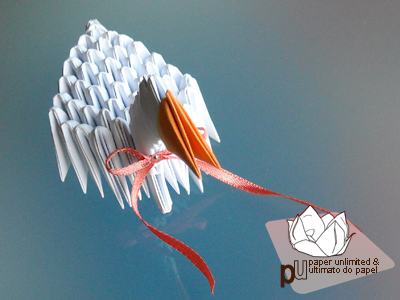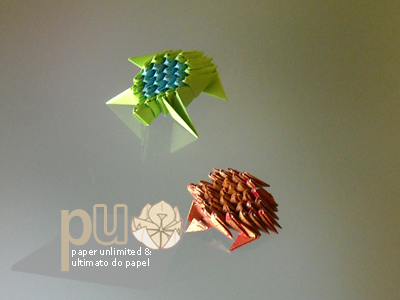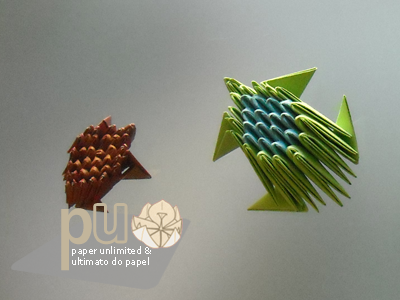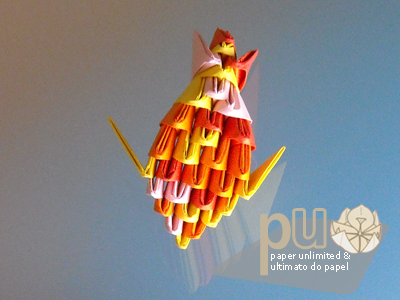Block folding, chinese modular origami or 3D origami strike once again! This was the fastest diagram I made for Waribashi. It totally slipped my mind and then “Hey, do you have a diagram for the magazine? We’re closing it…” and so I panicked and though and though some more and decided to stop thinking and start folding and taking photos and assembling the diagram! Some hours later I sent it… And now you have it too!
This is the mini swan! I explain: there are, at least, 3 swan models that are quite common.
The first is the swan, big with lots of pieces and several variations on the wings and tail and colours…
[edit: by big I mean with several hundreds of pieces: 700 to 900 pieces are common for this swan!]
Then, we have the second swan, the small sawn, a petite version, for fast assembly and a cute look. Also with some variations on tail and wings.
[edit: overall this swan needs 100 to 200 pieces!]
Finally we have the mini swan, a super small swan that’s really fast on folding and assembling… The diagram is a bit different of the other swans though! I saw a variation of this swan that added some beautiful wings and if I can reproduce it, it will end up here!
I like all these swans and for once I can start with the basic and then proceed to the more complex ones.
You can click here for downloading/ viewing the diagram (in pdf format).
This swan has only 11 pieces for the neck and 45 for the body giving it a grand total of 56 pieces! Nice, very nice. (:
As in the last paperblock models the paper is 1:2. For regular copy paper the best paper size is 4x8cm, 1.5×3″, or 5x10cm, 2×4″. For thinner papers perhaps 3x6cm or 1×2″. Thicker papers and 6×12 or 8x16cm, 2.50×5 or 3×6″ usually are fine.
As in all models you should fold one to three pieces first to test the paper and how the paper reacts to assembly. Too stiff and your model will be hard to assemble and too malleable and it’s not easy either!
This model was folded from office notes of 4,5x9cm (1,75×3,50″). I just love to have (pre)cut paper available (;
First you should fold all 56 pieces. It’s only 56 pieces and since the assembly is so simple and fast you can do it in one go!
You can assemble the swan’s neck first (if you watt to put eyes on it you should put them where the symbol “o” is!) and then you assemble the body. The neck fits right at the middle on the first line of the body.
Another optional thing is the ribbon. It’s common but it’s your choice! You can see two photos with and two without a ribbon. You can put something prettier to hold the ribbon but I had none at home… Nor had I the time to go buy one, too. This is why a little planning before folding can come in handy!
About the glue: if you want to use it, for stability or for a give away swan, I’m going to say what I always say: white glue for wood is the best! You have it simple or fast drying, either way it’s transparent when dry and you can mix it with water and cover your model with it. It gives a shiny acrylic feeling to the model.
You can also adjust the pieces after gluing but you should assemble the model fast for that!
Happy folding!








